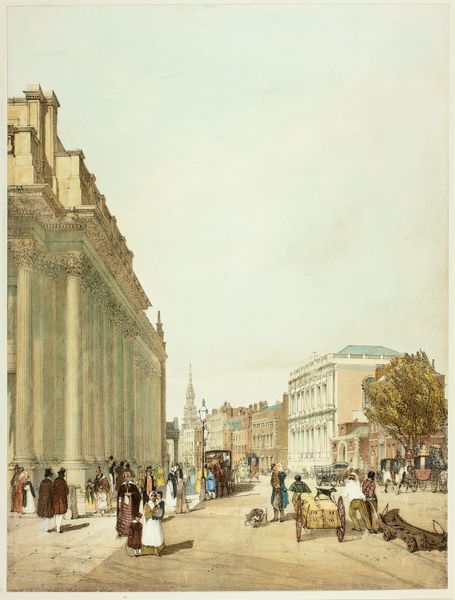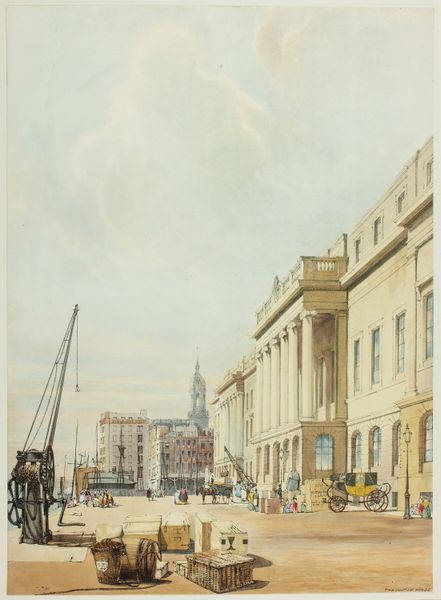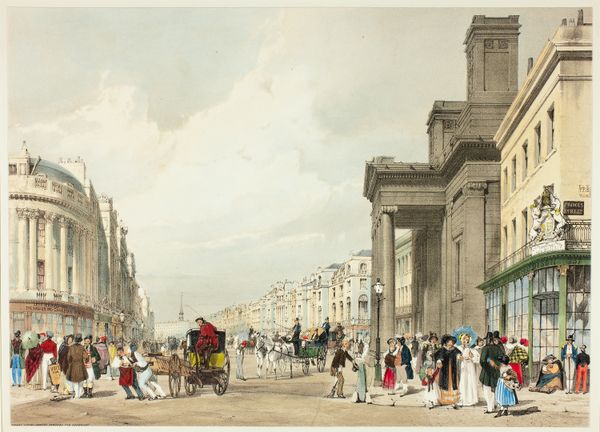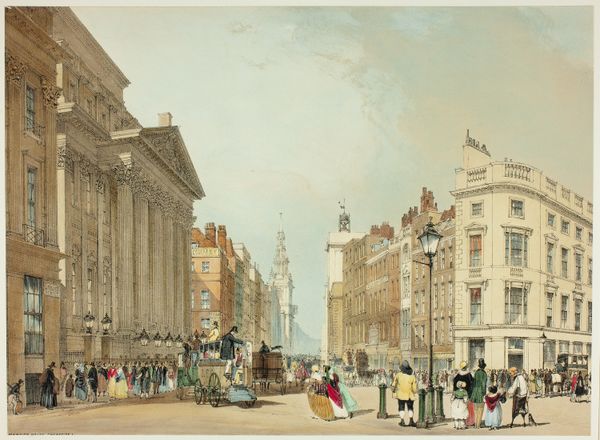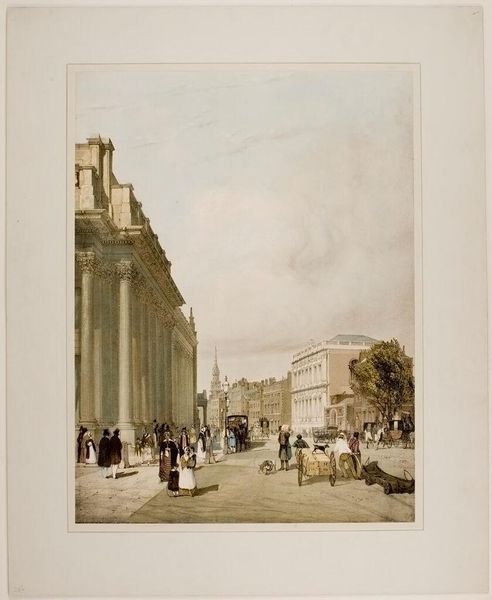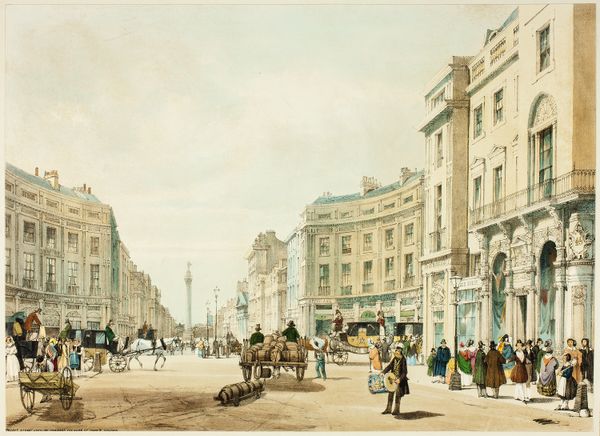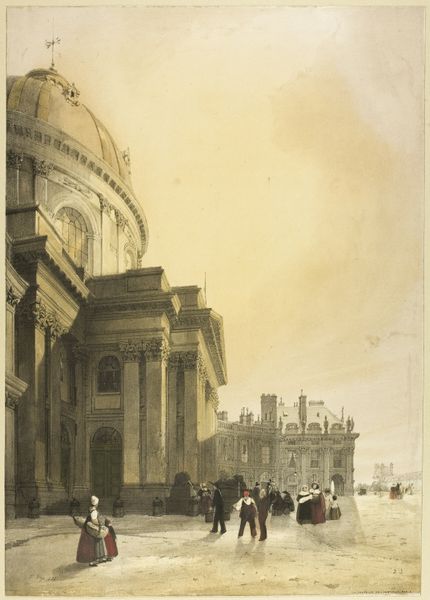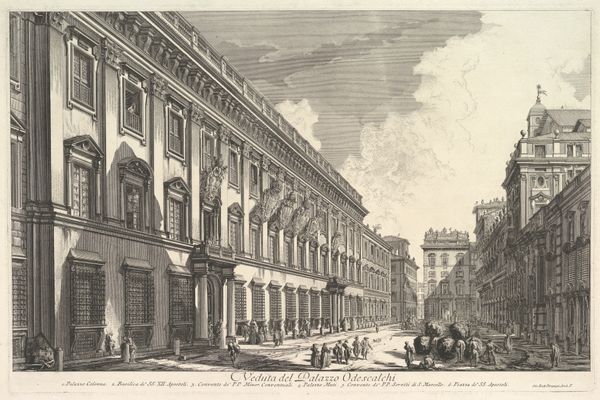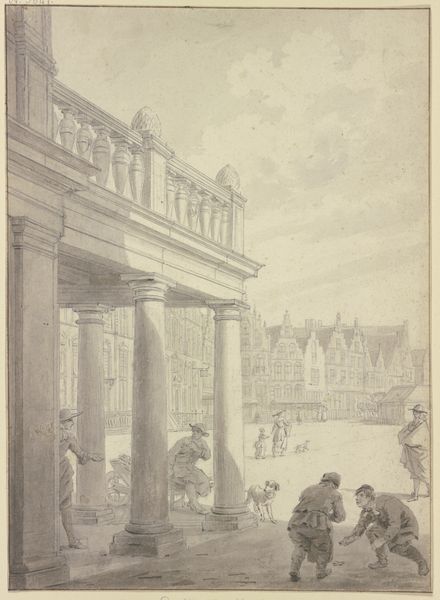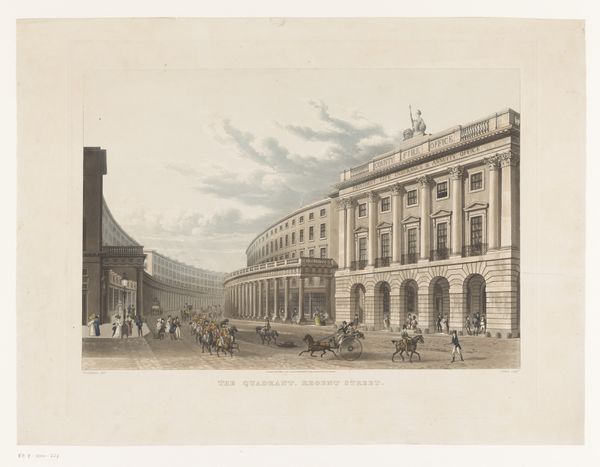
The Bank Looking Towards the Mansion House, from Original Views of London as It Is 1842
0:00
0:00
drawing, lithograph, print, paper
#
drawing
#
neoclacissism
#
lithograph
# print
#
landscape
#
paper
#
england
#
romanticism
#
cityscape
#
realism
Dimensions: 430 × 315 mm
Copyright: Public Domain
Curator: Thomas Shotter Boys created this lithograph, "The Bank Looking Towards the Mansion House, from Original Views of London as It Is" in 1842. It's part of the Art Institute of Chicago's collection. Editor: Immediately, I’m struck by the overwhelming whiteness of the buildings juxtaposed against the bustle of what looks like everyday Londoners. There's a very stark contrast between the upper echelons of the neoclassical architecture and the folks moving goods on the streets below. Curator: Precisely! The neoclassical architecture really stands as a monument to institutional power and wealth during the early Victorian era. It is fascinating to see how buildings of that period physically embodied an empire's global aspirations and sense of self-importance. The choice of perspective almost certainly alludes to how financial institutions dominated the social structure. Editor: I see your point entirely. Viewing it through that lens, it certainly highlights how ordinary individuals contribute to such power structures by engaging in hard physical labor, sometimes visibly exploited. It invites questioning of who genuinely benefits from this construction of opulence. It also gives visibility to racial dynamics from this era. Curator: Indeed. If we think about the printmaking process, too, creating such a detailed print as this would involve a certain level of collaboration between artist, artisans and printers. This kind of print would find an audience with an emerging middle class, keen to engage with imagery of London as a modern metropolis. Editor: It prompts one to consider who controlled these representations and which narratives were prioritized during a period of intense social and political transformation. Who are these "Original Views" really serving, and whose stories are ignored, in favor of a specific visual rhetoric about "progress." Curator: Definitely. Consider how London itself evolved—transforming from distinct districts into this interconnected hub—and what social impacts followed. How did class divisions physically shape the city, or certain labor rights movements find space to exist and take root amongst all this perceived glory? Editor: For me, seeing the actual workers against the grand structures, the picture offers opportunities to re-evaluate our own social dynamics, which are built on similarly complicated histories, whenever we examine such landscapes from centuries ago or from today. Curator: Yes, it shows that even seemingly neutral architectural portrayals can have strong political implications, something to consider for today.
Comments
No comments
Be the first to comment and join the conversation on the ultimate creative platform.

